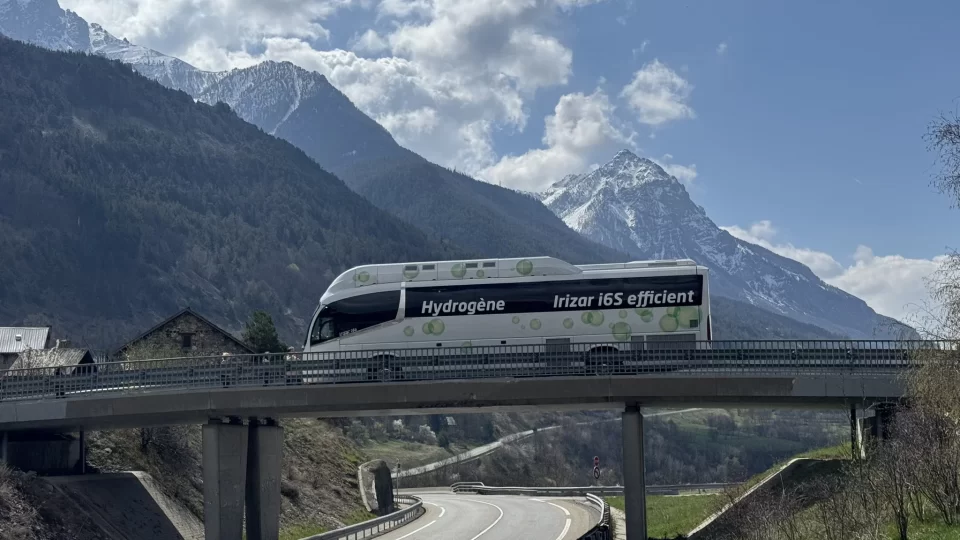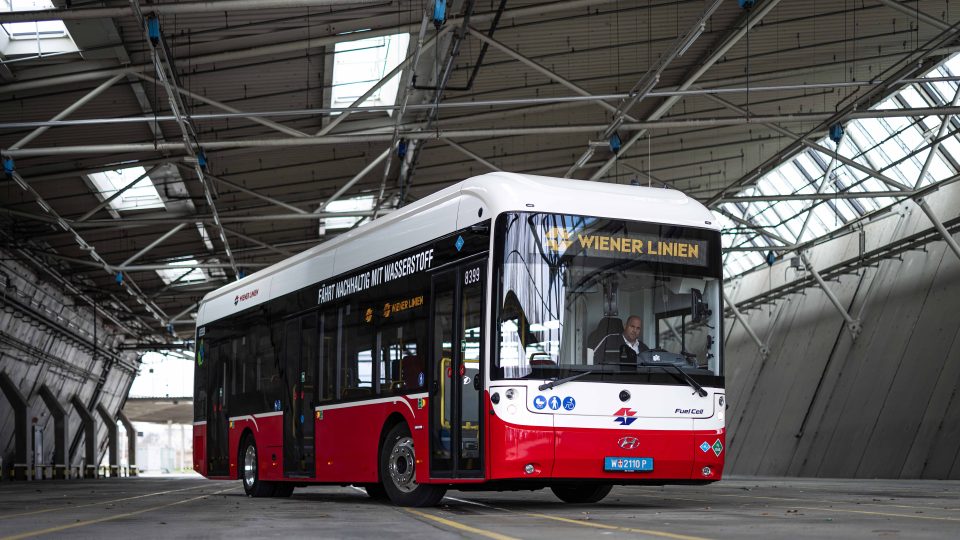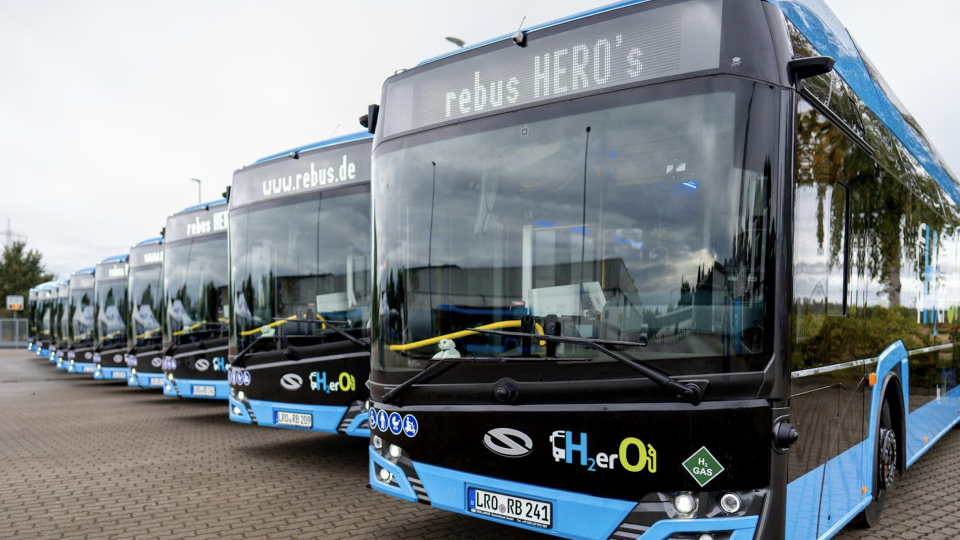Spotlight on the IVECO E-WAY H2: less weight, 15% more passenger capacity
Up to seven time less batteries than a BEV bus (one module instead of 7), with 15% more passengers. These are the specifications mostly stressed by IVECO BUS when outlining the features of IVECO BUS E-WAY H2, presented at Busworld 2023 in Brussels. The bus model derives directly from the E-WAY BEV bus model and integrates the […]
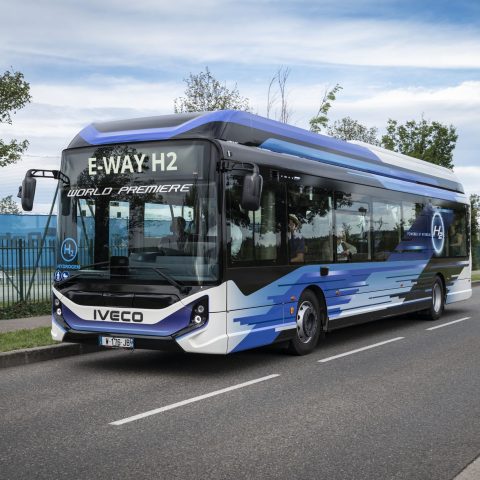
Up to seven time less batteries than a BEV bus (one module instead of 7), with 15% more passengers. These are the specifications mostly stressed by IVECO BUS when outlining the features of IVECO BUS E-WAY H2, presented at Busworld 2023 in Brussels.
The bus model derives directly from the E-WAY BEV bus model and integrates the fuel cell technology of the South Korean multinational Hyundai Motor Company, represented by HTWO.
IVECO BUS E-WAY H2 is a finalist for the Sustainable Bus of the Year 2025 award, whose winners will be announced at FIAA in Madrid on October 22, 2024.
Iveco E-WAY H2, the background: focus on manufacturing
A significant feature of the E-WAY H2 is its significantly lighter design, compared to the BEV version equipped with 485 kWh batteries. This reduction in weight not only increases passenger capacity to 111 from 93 but goes also together an enhanced range, which on the fuel cell model is increased by 25%.
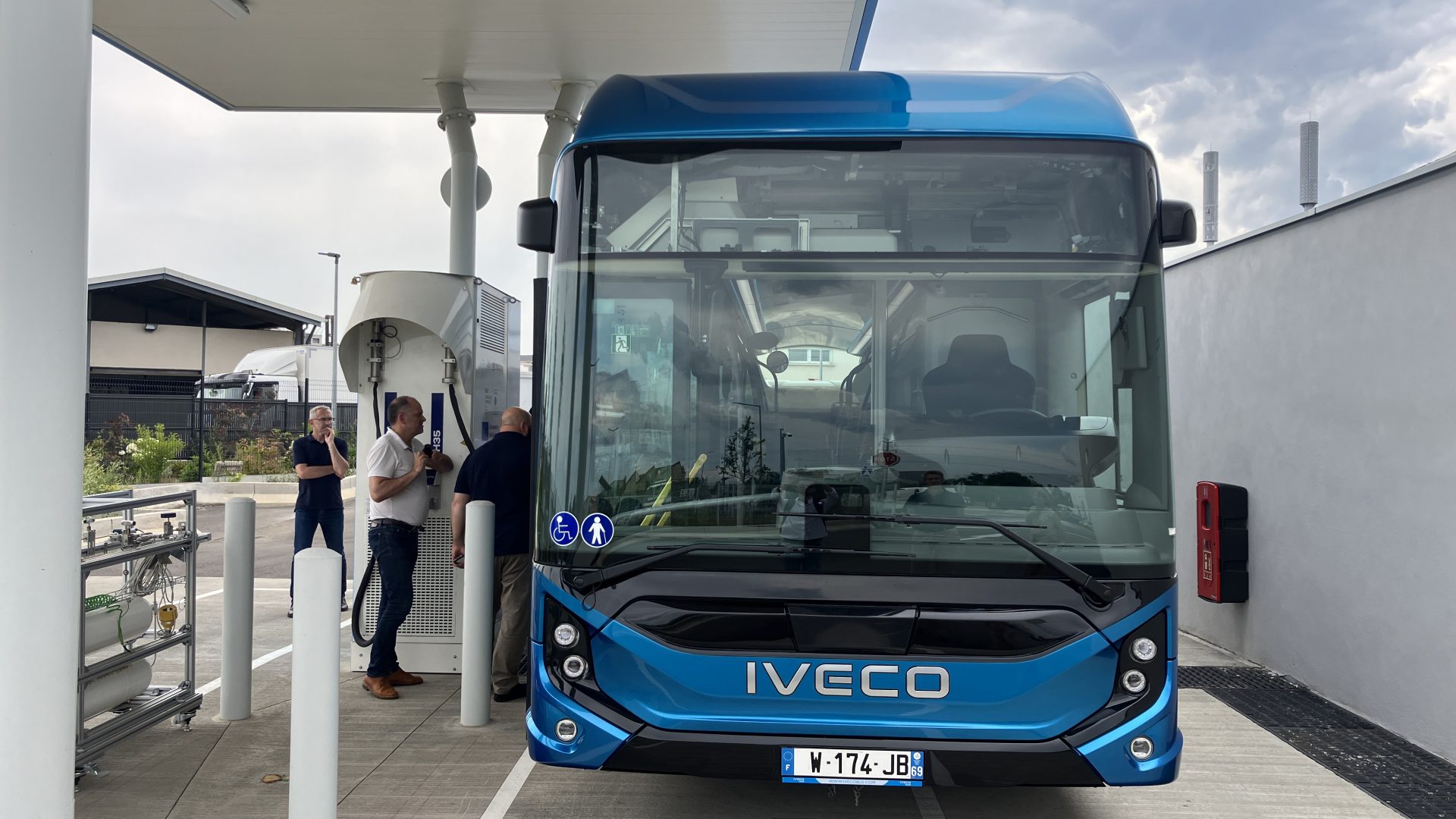
On the roof we find fuel cell and battery thermal management units at the front, followed by the carbon dioxide heat pump air conditioning system (Konvekta UL500); further to the rear are the hydrogen tanks, consisting of four type 3 cylinders (aluminium liner coated in carbon fibre) capable of just over 31 kg storage of H2, and at the back the traction system cooling unit.
In the former engine compartment there’s room for the fuel cell module, inverters, and converters, plus a 69 kWh NMC battery module positioned transversally, developed by FPT Industrial (the same one that, in greater numbers, equips IVECO BUS brand electric buses). This battery features an energy density of 178 Wh/kg.
The E-WAY H2 is currently only available in twelve-metre lengths, with two or three doors.
The driveline is the Siemens ELFA 3 provided by Cummins group (and more specifically by the division Accelera by Cummins) with 310 kW of peak power and 3,000 Nm of maximum torque, powered by a hybrid system managed by new software platform (eVeCoP: electric Vehicle Control Platform) capable of optimising energy flows from the fuel cell and the battery.
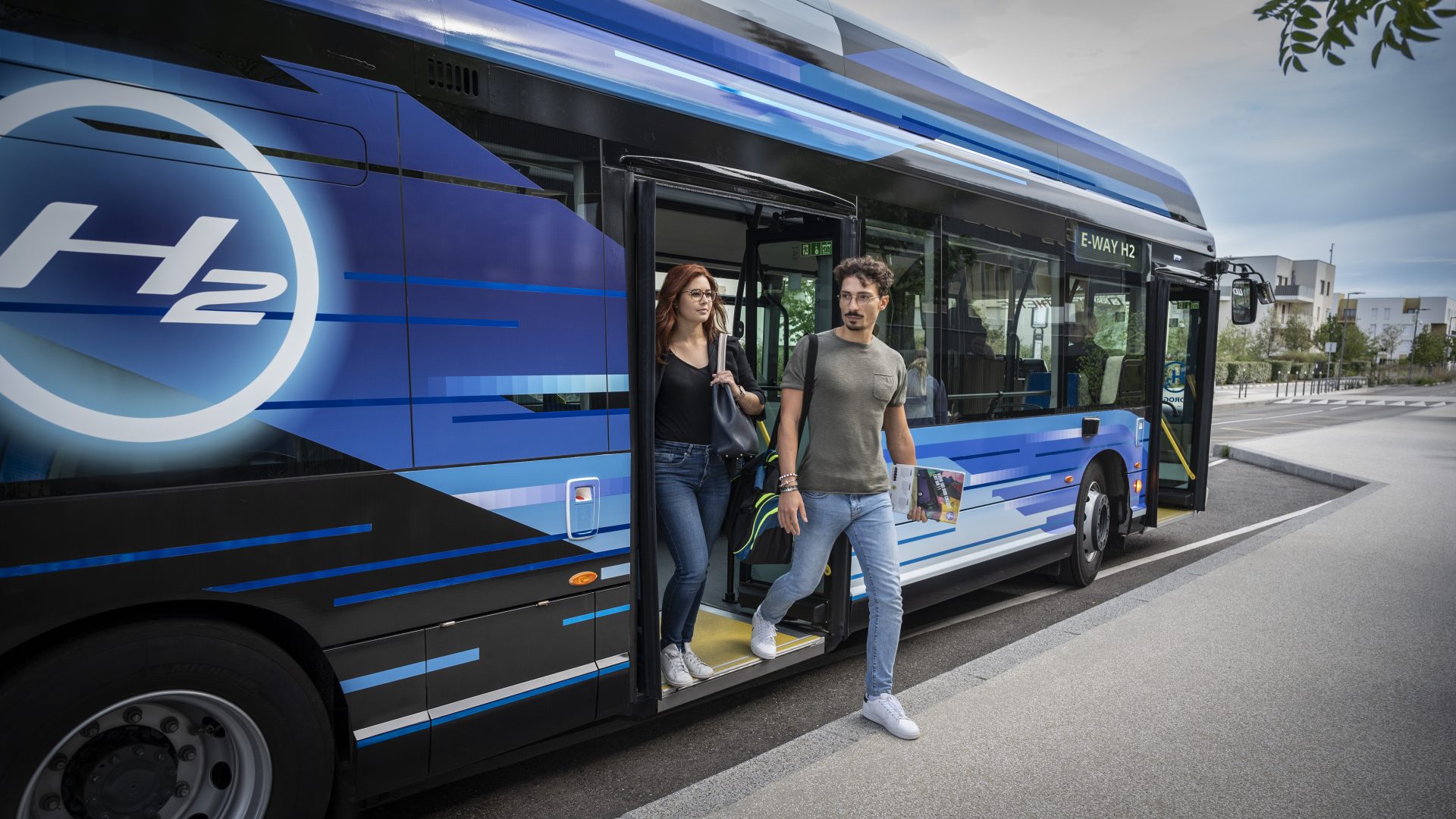
Spotlight on new IVECO BUS E-BENCH
The new testing facility IVECO BUS E-BENCH sets itself as an innovative tool for hydrogen strategy definition
Since 2023, IVECO BUS Vénissieux R&D centre is fully operative with its new and innovative testing facility E-BENCH.
It has been decisive to define the most efficient concept for FCEV, named “Mid-Power concept”, from the 110 kW Hyundai fuel cell, and of the 69 kWh batteries. That, according to the manufacturer, provides significant benefits in optimizing fuel consumption, climatic comfort and lifetime of the components in an urban mission.
Hydrogen refuelling, which takes about fifteen minutes, is carried out through the nozzle located above the right front wheel.
For operating purposes, IVECO BUS has designed its H2 vehicle without the need to recharge the battery pack. However, charging it is made possible thanks to the conventional CCS2 socket, for instance in view of pre-heating the vehicle at the depot.
On the structure of IVECO E-WAY H2
The front axle is the Iveco RI75 with independent suspension, while the rear axle is the ubiquitous ZF AV133, here with a 7.36 axle ratio. Braking is electronically controlled, supported by the regeneration mode that can be switched on either by the brake pedal or a dashboard lever. The parking brake is electric.
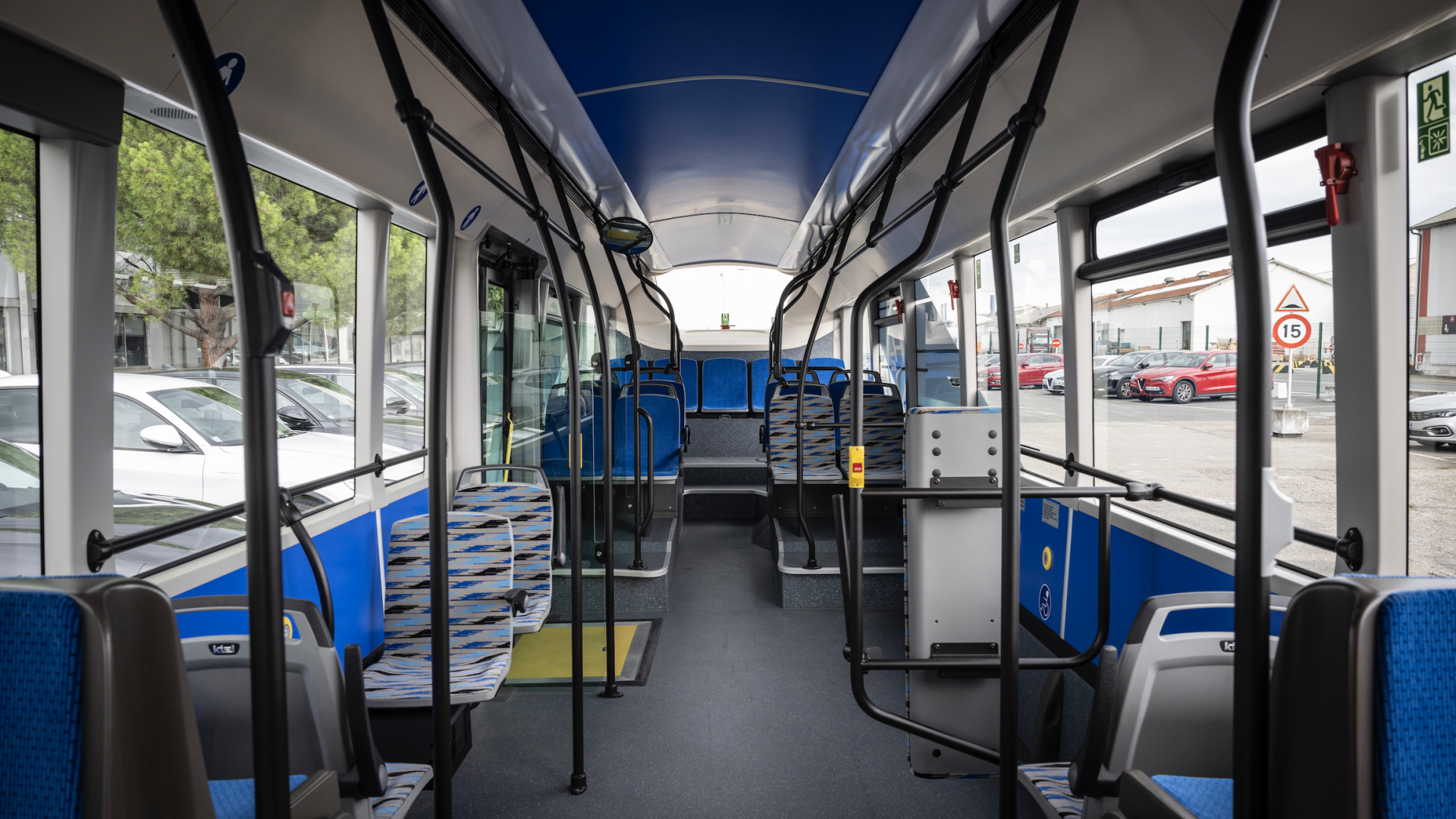
The structure is made by bolting down together the five structural parts that make up the vehicle (front, rear, sides, roof) made of welded stainless-steel profiles, assembled together with the steel floor structure, which is fully cataphoresis treated.
The resulting structure meets all the main standards on rollover and impact resistance (R66, R29, R93) although these are not mandatory for city buses.
Inside the IVECO E-WAY H2
The interior also retains all the specific fittings of Iveco buses, with interior paneling in plastic laminate, wheel arch shells in thermoformed plastic, handrails in stainless steel or lacquered to the customer’s choice.
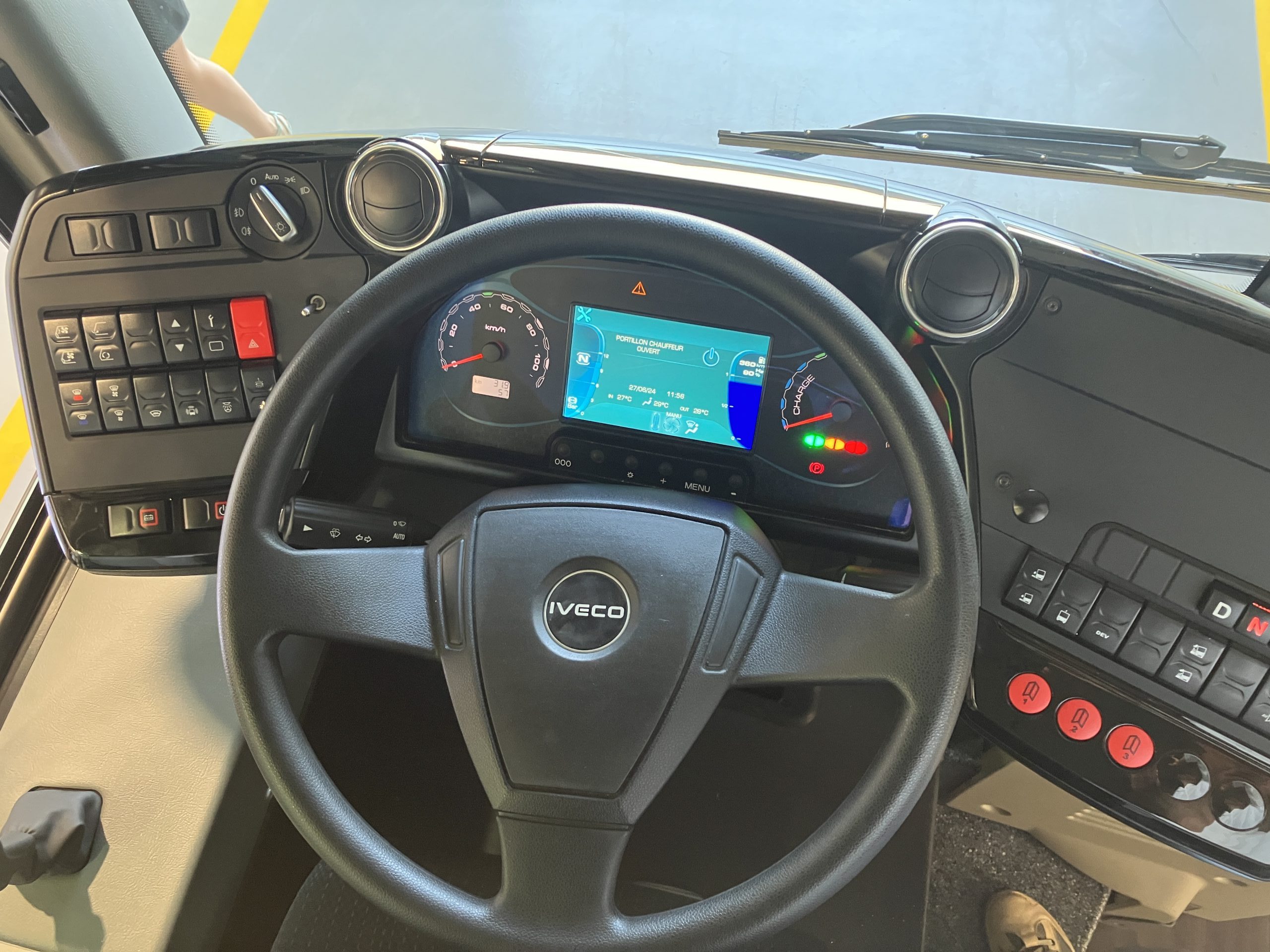
The passenger seats are mainly fixed to the walls and can be configured in different arrangements, with the wheelchair seat either on the left in front of the central door or on the right, immediately in front of it.
ADAS suite is complete
The ADAS (Advanced Driver Assistance Systems) equipment available on the IVECO BUS E-WAY H2 includes the Blind Spot technology, which alerts drivers of vehicles in their blind spots, and the Moving Off system, assisting with safe departures. The Camera Reverse aids in safer reversing maneuvers, while the Intelligent Speed Assistant displays speed limits to ensure compliance with traffic regulations. To combat driver fatigue, the Driver Drowsiness Attention Warning monitors alertness levels.


